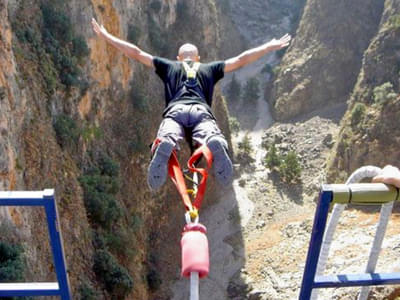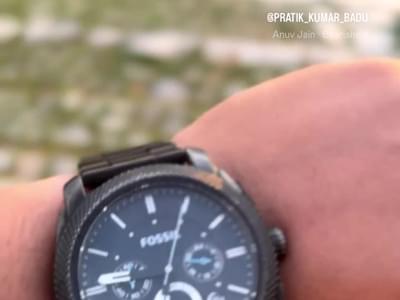Hampi
One of Karnataka’s most treasured gems, Hampi is full of history and serenity. With various rulers reigning over the Vijayanagar empire, the map of Hampi was designed in such a way that today it stands as one of God’s blessings to the humankind. There are temples at every foot-step and each has an unique feature in terms of the architecture, significance and the stories that they have to tell. Known to be a hippie’s paradise, the only dry factor about Hampi is it’s weather.
Right from the locally enriching culture to the temples that have stood the test of times, Hampi has established itself to be one of the most promising tourist destinations in Karnataka. It attracts various adventure seekers, architecture enthusiasts, off beat tourist lovers and devotees from across the globe. Known to be the UNESCO World Heritage Site, the ruins of Hampi do not justify the adjective ‘ruined’ at all. Visit for the temples, or for the hikes, or simply indulge yourself in the delectable local cuisine. No matter what you choose Hampi for, it will always do justice to your plans and never let you down!
Hampi Packages
Hampi FAQ's
What are the best things to do in Hampi?
Discover the ruins of Hampi: Take a walk around the main town of Hampi and get mesmerized by the beautiful ruins of Hampi. Every nook and corner is bordered with beautiful monuments and each one of them has a story or two to say. Some of the ruins are also considered to be among the top UNESCO world heritage sites. Sometimes also referred to as the forgotten empire, this truly is a place you should visit once in your life time.
Understand the mythology of Hampi: There is a great amount of history, mythology and ancient tradition associated with Hampi. This picturesque village has a lot to offer to its visitors. However, visitors often neglect to notice the history about the place. Explore the beautiful mythology of this region.
Live in a hut at the Hippie island: Did you know? There is actually an island that is called the Hippie island? Isn’t that awesome. This tiny island known as Virupapur is filled with lush green trees and crystal clear water that you can explore. There is a great number of pilgrims too, that come flocking every year to this beautiful location.
Go climbing at the various hills: There are so many different hills that you can climb on and enjoy the stunning viewpoints at. Among the chief primary attractions of Hampi is the Matanga hill. This is perhaps, the most visited of them all.
Check out the birth place of Lord Hanuman: Anegondi – which is perhaps a few miles away from Hampi is believed to be the birthplace of Lord Hanuman. This place is easy to climb and one can successfully carry out a great climbing activity while you’re at it.
Ride through the red river: Hampi consists of a river that is literally red in color. This is the same river you need to cross in order to reach the Hippie island. Keep that in mind and travel to the red river.
When is the best time to visit Hampi?
Hampi is commonly known as the hippie’s paradise. Known for its ever welcoming weather conditions, Hampi has three seasons. The best time to visit Hampi is during the winter season. This is the month wise break-up of the seasons to visit Hampi:
- April to July (Summer Season)
It is quite hot during this time of the year. The temperature starts with 27 degrees Celsius and can go up to 37 degrees Celsius. May and June do not make for good months during this time as it is unbearably hot. - July to September (Monsoon Season)
Even though the rains can be a little bit of a barrier, but it is during this season that the villages become extremely green and beautiful. Even the monuments become extremely pleasant to visit during this time of the year. - October to March (Winter Season)
This is the best time to visit Hampi. It is during this time of the year that the weather is extremely accommodating and quite comforting as well. Perfect for bonfires, sight-seeing and long walks, it is during this season that you can enjoy the beauty of Hampi completely.
What are the travel tips to visit Hampi?
Sort your plans out: No matter what location or destination one plans on spending their holidays at, it is essential that certain travel tips are kept in mind. Hence, if you’re still in the stage of hatching your plans for Hampi, make sure that you plan well and plan well ahead of time. Make a good, well-researched note of all the important information like accommodation options, local transportation, hospitals, restaurants, resorts and more. It is quite obvious that you’d want to experience a hassle-free journey if you’re actually spending money on your holidays.
Transportation in the area: When it comes to transportation in Hampi, there is very little that you need to worry about. The holiday destination is well connected and one can easily make use of the local transport while visiting different locations within the space.
Have something of your own: However, what is better advisable is to ensure a private fare while you’re in the region. The simple reason for this tip is that it becomes much easier to visit the places around at one’s own convenience. Cars and bikes are easily available on rent at these places.
Be smart, avoid sham services: Travellers must remain aware of who they are hiring as guides. Past experiences have led many to be involved in a scam wherein either their property was stolen or the services were overpriced. This can really trample one’s travel experience. Hence, it is essential that one plans well and one plans well ahead of time.
The pick-pocketers can get on your nerves: Yes, you have come to the city with hopes of enjoying your holiday. However, it is always better to be well prepared for all circumstances rather than feeling sorry or regretting it later. Keep an eye out for pick-pockets. These disguise themselves as normal individuals just strolling across the town but they are the most dangerous. Keep yourself and your property well protected.
Drinking laws: Consumption in Hampi is not very restrictive. One can easily consume alcohol as and when he/she feels like as liquor is easily accessible. However, avoid consuming alcohol in public places. Majority of the resorts, restaurants, pubs and clubs will have the availability of alcohol.
How to reach Hampi?
There are various ways through which you can reach Hampi. There are plenty of options available that are facilitated by Karnataka Tourism. You can consider the following ways to reach Hampi:
- By Air: The closest airport to Hampi is situated in Hubli, which is about 143 kilometres. Goa is also an option to consider, so you can then take a bus or drive down to Hampi from there.
- By Train: The closest station to Hampi is in Hospet, which is situated at a distance of 13 kilometres away. You can take overnight trains from Hyderabad or Bangalore. One of the best options is to take the Hampi express which is an overnight train and can be boarded from Mysore.
- By Bus: The main station of Karnataka tourism which is close to Hampi is in Hospet. There are various buses that run from Bangalore, Hyderabad and Mysore to Hospet. You can then hop on a local bus which will cost you roughly 20 rupees and get to Hampi from the Hospet bus station.
- By Car: You can drive to Hampi from anywhere in Karnataka and if you are up for a full fledged road trip, then driving down from Maharashtra or Goa would also make for quite a memorable journey.
Which are the best resorts to stay in Hampi?
Hampi boasts of lovely options to stay where you can enjoy the simplicity of life in its entirety. Here are some of the best resort to stay in Hampi:
- Hyatt Place Hampi
- Sloth Bear Resort
- Hotel Malligi
- Vijayshree Heritage Village, Hospet
- Royal Orchid Hotel-Hampi
- Heritage Resort Hampi
- Kishkinda Heritage Resort
- Gowri Guest House
- Orange County, Hampi
- Siri Home-Stay
- Clarks Inn Hampi
You May Also Like: Places to stay in hampi
What are the best public transport modes to commute around Hampi?
Hampi is a town made up of rocks. There is a story that each and every rock tells you. Here are the options that you can consider to get around when in Hampi:
- By Bicycle: You will see a completely different side of Hampi if you ride around the town. Every nook and corner will tell you something new about the city.
- On Foot: Another great way to explore Hampi is on your foot. This way you can connect with the locals and see a completely authentic side of Hampi.
- By Boat: A lot of main attractions of Hampi are located across the river. You can get across the river by boat and visit these places.
- By Rickshaw: You can travel by Rickshaw as well to cover short distances.
- By Car: Since Hampi has very dry heat, walking around the city can get quite tiring instantly. Which is why, travelling by car is the safest option.
Which are the best places for shopping in Hampi?
There are plenty of markets and shops where you can enjoy street shopping in Hampi. Here are the options to consider:
- Vittala Bazaar
- Hampi Bazaar
- Hoova Craft Shop and Cafe
- Akash Art Gallery and Book Stall
- Aspiration Store
- Gail Djembe Music Shop
Where are the ruins of Hampi located?
Hampi is considered to be one of the most historical sites of India. Today, in ruins- the town is commonly referred to as Ruins of Hampi. The rocks here have every visitor a story to tell and the temples that have stood the test of time give Ruins of Hampi a completely different charm.
Which are the UNESCO world heritage sites to visit in Hampi?
Hampi is known as the UNESCO World Heritage Site due to its old historic temples. It has earned the reputation of being a temple town and has an entire group of monuments that come under the list of UNESCO World Heritage Sites. Some of the examples of the monuments under the aforementioned list are- Krishna Temple, Krishna temple, Pattabhirama temple, Hazara Ramachandra, Chandrasekhara temple and Jaina Temples.
Which are the famous hiking locations in Hampi?
Hampi has something different to offer at every step. Here are the famous hiking locations of Hampi where you can explore the best of trails that the town has to offer to you.
- Vertical Rock Faces
- Fort at Bali, Parvat
- Challenging Rock Face
- Fort Main Gate
- Observation Post at Bali Parvat
- Rock Cut Passage at Bali Parvat
- Durga Temple
- Zodiac Garden
What are the best locations for rock climbing in Hampi?
Hampi is known to be quite a famous place for Rock Climbing. The four famous places where you can go for rock climbing are:
- Hemakuta Hill
- Matanga Hill
- The premises of Tiruvengalantha Temple
- Malyavanta Raghunatha Temple
Why is Hampi Called the City of Ruins?
Most of us who have heard or been to Hampi know it as the City of Ruins with magnificent monuments dating back to the 1st century. Spread across more than 4,000 hectares, Hampi is a UNESCO World Heritage Site. It’s ruins have been described by the organization as an "austere, grandiose site" comprising several temples and palaces that continue to attract travellers from across the world even today.
But do you know why Hampi is called the City of Ruins? Read on to find out.
Hampi, located in Karnataka, consists of over 1,600 surviving remains of the last major Hindu kingdom of Vijayanagara that includes "forts, riverside features, royal and sacred complexes, temples, shrines, pillared halls, mandapas, memorial structures, water structures and others.” There is also evidence of Ashokan epigraphy in the 3rd century BC while the initial historical record of settlement in Hampi goes back to the 1st century. The city also finds a mention in the Ramayana and the Puranas of Hinduism as Pampaa Devi Tirtha Kshetra.
Hampi was the centre of the Vijayanagara Empire in the 14th century. It was a wealthy and prosperous city with several temples, farms and markets attracting traders from Portugal and Persia. The empire reached its zenith while other kingdoms down south were being defeated by the Delhi Sultanate.
However, the scenario took a turn in the early 14th century when Muhammad bin Tughlaq ascended the throne in Delhi. He was believed to be a draconian ruler with his reign giving rise to internal rebels, one of whom took refuge in a tiny kingdom called Anegundi near Hampi. Tughlaq’s army eventually showed up, defeated the kingdom and killed the rebel.
Tughlaq appointed a general to take care of the kingdom. However, the general returned to Delhi and left two people (believed to be brothers from one of the ruling families of the region) in-charge. They, slowly and rapidly, expanded their territories. People trusted them with keeping invaders from Delhi at bay and eventually joined hands with them. This unified kingdom came to be known as the mighty Vijayanagara empire that had the whole of South India under its control.
Soon after the Vijayanagara empire came into being, another one was also founded in its immediate north. Alauddin Hassan Bahman Shah, a commander in Muhammad bin Tughlaq’s army, founded the first Muslim kingdom in the Deccan called the Bahmani Sultanate following a revolt against Tughlaq. The kingdom, over a period of two centuries, split into 5 five Deccan Sultanates of Ahmednagar, Berar, Bijapur, Bidar and Golconda.
Back in the Vijayanagara empire, ruler Aliya Rama Raya got into conflicts with the Sultanates quite frequently in the 16th century due to his changing loyalties. The Sultanates, finally, formed an alliance and invaded Vijayanagara. And then began the iconic Battle of Talikota between the Vijayanagara Empire and the Deccan sultanates in which the latter defeated and killed Aliya Rama Raya.
Raya would have won the war had two Muslim generals of the Vijayanagara army not switched sides suddenly. The Muslim officers shifted their loyalty to the sultanates at the last moment and captured a surprised Raya. They, then, beheaded him on the battlefield creating chaos and confusion within the Vijayanagara army, which then lost the battle completely.
Following the defeat of the glorious Vijayanagara empire, the army of the Sultanates plundered the beautiful city of Hampi and reduced it to ruins, in which it still remains. Now, it’s just a ravaged barren area of land scattered with ruins that narrate the story of a violent past. They conquered, pillaged, destroyed, looted and burnt the stunning monuments and other infrastructure in Hampi for six months after the war before abandoning it in ruins. The Dravidian-style architecture that includes temples, palaces, bazaars, mandapas, gardens and military structures is now scattered all over the city in a dilapidated condition.
In his book The Forgotten Empire, Robert Sewell wrote, "With fire and sword, with crowbars and axes, they carried on day after day their work of destruction. Never perhaps in the history of the world has such havoc been wrought... so suddenly, on so splendid a city; teeming with a wealthy and industrious population in the full plenitude of prosperity one day, and on the next seized, pillaged, and reduced to ruins, amid scenes of savage massacre and horrors beggaring description."
Having said that, Hampi is breath-taking and beautiful even in its ruins. One can only imagine what it looked like during its heydays. It would take months or years to even skim the surface of this city’s treasures. Hampi is one city that deserves a visit, so allow us to help you with that.
You can go trekking in Hampi and feel the thrill while bouldering early in the morning. Tek through paddy farms and small jungle trails. Visit the famous Virupaksha Temple and then proceed towards Vijay Vittala Temple through the Sugreeva Caves followed by a Coracle Ride. Experience jaw-dropping views of the hills and valley following the trek.
There’s lots to see and experience in Hampi. Make sure you do all of that. Don’t miss out any!
Newly Added Hampi Experiences
Hampi Reviews







.jpg?w=340&dpr=2)



















.jpg?w=340&dpr=2)

.jpg?w=340&dpr=2)
.jpg?w=340&dpr=2)
.jpg?w=140)







.jpg?w=340&dpr=2)
.jpg?w=340&dpr=2)
.jpg?w=140)





















